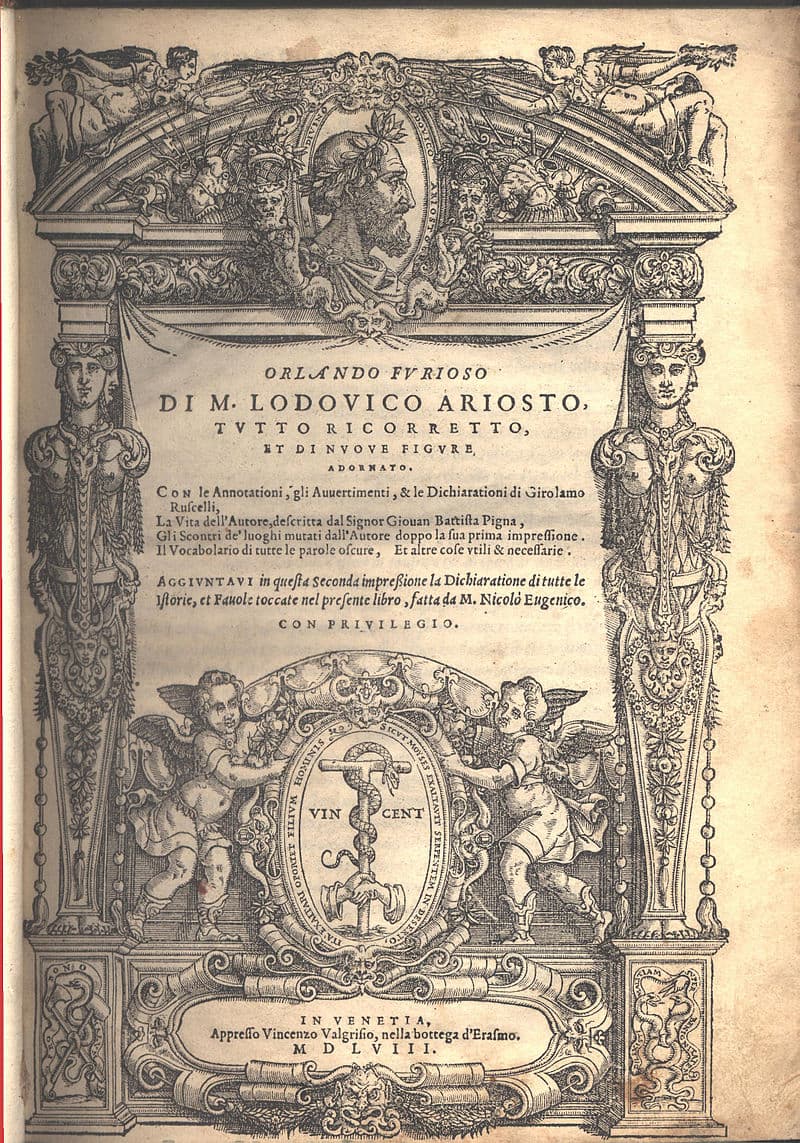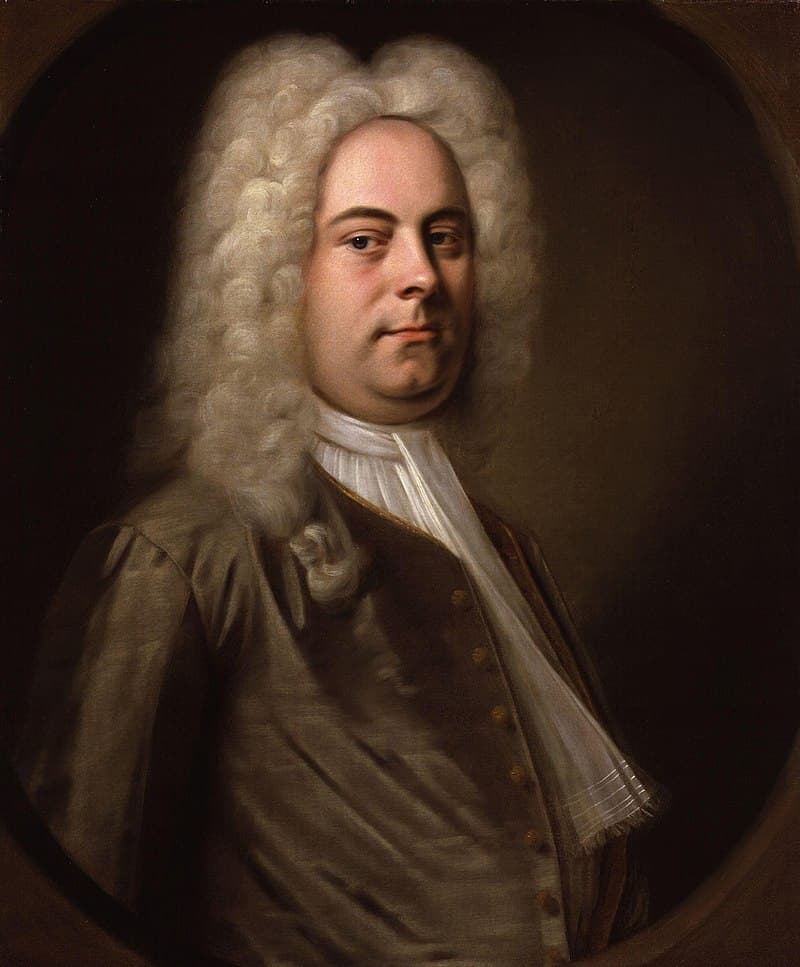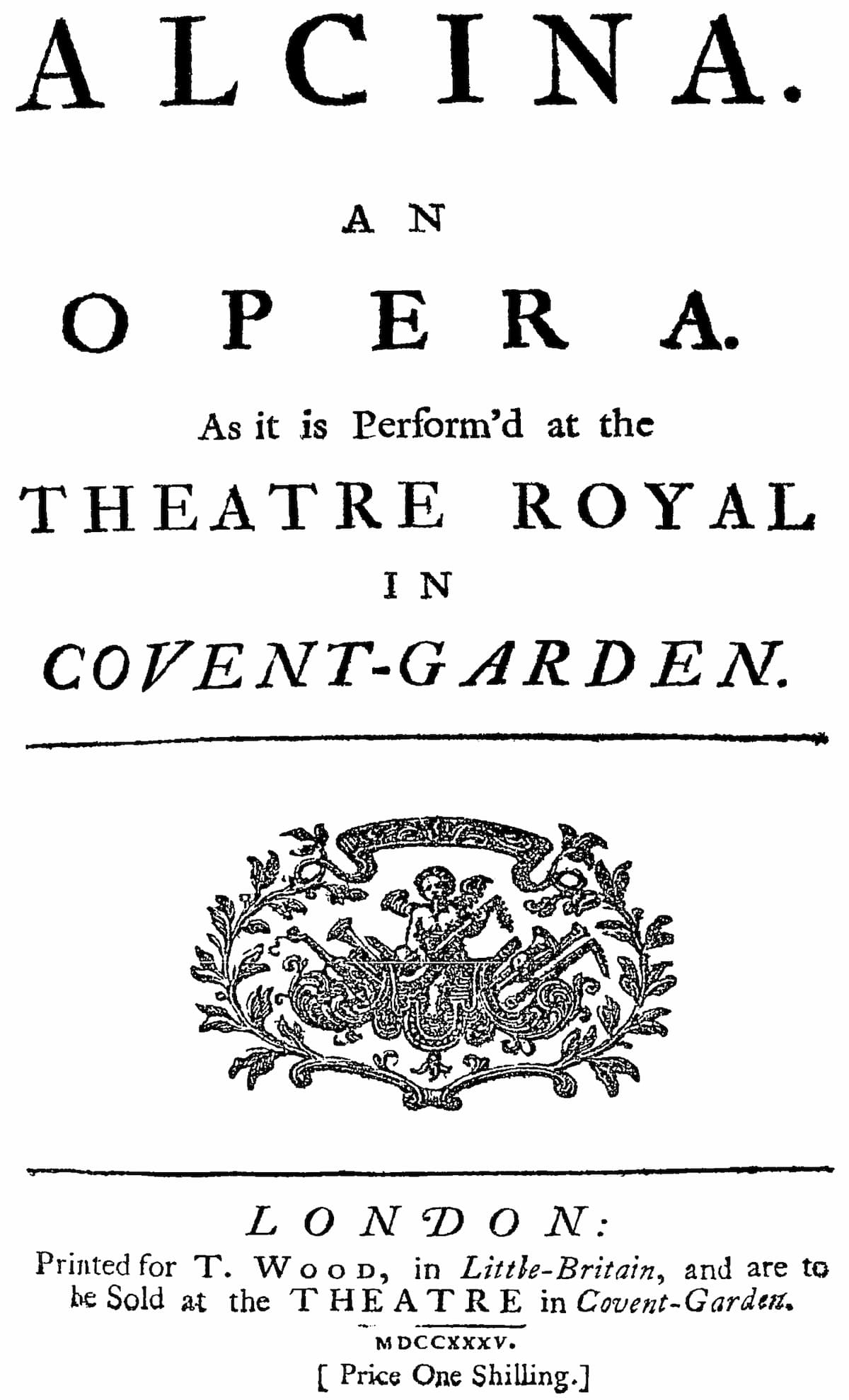The Italian epic poem “Orlando furioso” (The Frenzy of Orlando) is considered one of the most influential works in European literature. Penned by Ludovico Ariosto and published in its completed form in 1532, the story takes place against the backdrop of the war between Christian paladins and the Saracen army that has invaded Europe and is attempting to overthrow the Christian empire. The poem is about war and love and features a large cast of soldiers and sorcerers, and also a gigantic sea monster called the Orc, and a flying horse called the hippogriff. The paladin Orlando loves the pagan princess Angelica, and the female Christian warrior Bradamante loves the Saracen Ruggiero.

Title page of “Orlando furioso”, 1558 edition
The story takes place across the entire world and even includes a trip to the moon. “Orlando furioso” provided inspiration for Edmund Spenser, Lope de Vega, Sir Walter Scott, Jorge Luis Borges, and William Shakespeare, and the poem was the basis of countless opera settings. Antonio Vivaldi staged three operas on themes from “Orlando furioso,” but perhaps the most famous operas inspired by the poem are three works by George Frideric Handel, Orlando of 1733, and Ariodante and Alcina of 1735.
George Frideric Handel: Alcina, “Overture”
Alcina was Handel’s last great success as an opera impresario, as his opera company would collapse just one year later. Composed in 1735 in collaboration with producer John Rich, the opera opened at Covent Garden on 16 April 1735. The opera ran till the end of the season in early July for a total of 18 performances. The first rehearsal took place at Handel’s own house on 11 April, and the artist Mary Pendarves wrote: “I think it is the best he ever made, but I have thought so of so many, that I will not say positively ‘tis the finest, but ‘tis so fine I have not words to describe it … While Mr. Handel was playing his part, I could not help thinking of him as a necromancer in the midst of his own enchantments.”

George Frideric Handel by Balthasar Denner
The libretto has all the popular elements of an opera of the time, including confused relationships, disguises, and magic spells. The plot takes place on a magical island belonging to the beautiful but very dangerous enchantress Alcina. She has a habit of seducing every man who lands on her island and subsequently transforms them into rocks or wild animals when she has grown tired of them. The heroic knight Ruggiero, riding the hippogriff lands on Alcina’s island, and despite all warnings he quickly falls under her spell.
George Frideric Handel: Alcina, “Ah! mio cor!”
Meanwhile, Ruggiero’s lover Bradamante is looking for her fiancée and together with her guardian Melisso follows Ruggiero to the island. Bradamante is disguised as a man named “Ricciardo,” and she aims to free her lover with the help of a magic ring, which enables the wearer to see through the illusion. Initially, they meet the sorceress Morgana who immediately falls in love with Ricciardo and abandons her lover Oronte. In general confusion, Melisso manages to slip the magic ring onto Ruggiero’s finger, and he finally sees the island for the wasteland of discarded lovers it really is.

Handel’s Alcina
However, Ruggiero is warned that he cannot simply leave as Alcina wields immense powers, and they hatch a plan to escape the island. However, in a wonderful twist to the story it is discovered that Alcina genuinely loves Ruggiero. As true love enters her life, her magical powers just slip away. Reunited with Bradamante, Ruggiero is finally able to defeat Alcina and he destroys the urn that contains the source of all her power. All the wild beasts and rocks transform back into men, and with wickedness defeated, true love is allowed to triumph.
George Frideric Handel: Alcina, “Vorrei vendicarmi”
Handel’s musical setting adds a deeper dimension to the character of Alcina, one of the composer’s most complex heroines. She is simultaneously witch and woman, villain and victim. Her music shifts from fiery to sympathetic and back and again, but overall she is portrayed as surprisingly vulnerable. Handel wrote this complex role for Anna Maria Strada del Pò.

Title page of George Frideric Handel’s Alcina
Charles Burney reported that the public did not like her when she first came to England. “She was a singer formed by Handel, and modeled on his own melodies. She came hither a coarse and awkward singer with improvable talents, and he, at last, polished her into reputation and favour.” The star of the cast, however, was the alto castrato Giovanni Carestini, who sang the role of Ruggiero and who had the “fullest, finest, and deepest counter-tenor that has perhaps ever been heard.” The original production of Alcina also contained a number of ballets, but they turned into something of a scandal. The imported French ballerina Marie Sallé shocked the English audiences with her revealing costume. According to the Abbé Prévost, she danced “without skirt, without a dress, in her natural hair, and with no ornament on her head.” After being hissed in her final performance of Alcina, she left England, vowing never to perform there again, and Handel removed the ballet music from the opera.
For more of the best in classical music, sign up to our E-Newsletter
George Frideric Handel: Alcina, “Verdi Prati”
